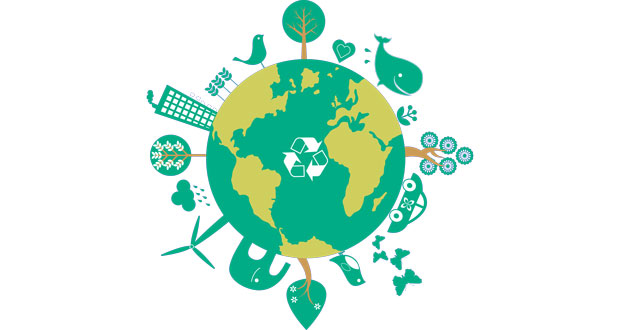 SUSTAINABLE TECHNOLOGY EXPERT’S VIEW
SUSTAINABLE TECHNOLOGY EXPERT’S VIEW
TIM DURET,
DIRECTOR OF SUSTAINABLE TECHNOLOGY, VEOLIA UK
To counter climate change, the circular economy now is set to play a critical role in helping to cut carbon emissions, as it typically saves between 30-80 per cent of the carbon footprint associated with processing virgin materials. So, for organisations wanting to improve their sustainability, cut their carbon footprint, and enhance their green credentials, turning the problem of waste into a recycling solution is a very positive move. So how can recycling be increased and what technical solutions are there to help?
Big advances in the UK over the last two decades have seen recycling rates increasing from around five per cent in the late 1990s, to more than 50 per cent now through technology, policy and increased awareness. But to really optimise this, businesses need to have an integrated system involving every part of the waste journey, from sustainable product design, minimising the environmental impact of their core business activities and supply chains, and adopting best recycling practice.
Technology is transforming the recycling sector. Equipment such as solar auto-compacting bins, which send notifications to collection crews when full, will enable more waste to be collected more efficiently. Single line separation for all non-domestic producers of waste will optimise operational efficiency and target the recyclables that are currently too contaminated to be effectively recycled. Electrified mobile plant and vehicles, supported by a charging network, will further transform the way waste is collected. Equipping them with on-board weighing equipment to digitally record bin weights at premises will further boost performance and hand-held devices can provide on-the-go reporting digital tracking to monitor and auto-allocate tasks dependent on geographical location and capacity.
Increased automation of recycling plants will mean we can capture more resources from waste streams and do this more effectively. For example, waste electrical items such as screens are now disassembled using versions of the robots used on the assembly line, and these return the metals, LCD components, plastic and other valuable materials back to manufacturing processes. Plastic recycling processes can now treat many dozens of different grades of plastic, and greater recycling automation can be achieved by doing things as simple as changing the pigment in black plastic packaging.
Good recycling is about pushing the boundaries. It’s already possible to achieve a 98 per cent recycling rate for obsolete North Sea oil and gas structures. Even precious metals such as platinum can be extracted from pharmaceuticals which are past their use-by date and liquid solvents can be recovered and transformed into secondary liquid fuel which is used in the manufacture of cement.
Recycling is only limited by imagination. As technology advances more materials once thought of as non-recyclable can be harnessed and brought back and used in new applications. To take the next step forward organisations need to see what is possible on their site and turn these ideas into a carbon-reducing recycling reality.
Veolia is investing to take advantage of new technology, building more infrastructure and working with businesses to develop low carbon solutions that will help them play their role in achieving the net-zero goal.
 WASTE MANAGEMENT INSTITUTE’S VIEW
WASTE MANAGEMENT INSTITUTE’S VIEW
RAY PARMENTER,
HEAD OF TECHNICAL AND POLICY AT CIWM (CHARTERED INSTITUTION OF WASTES MANAGEMENT)
CIWM recently launched a new strategy to support the global transition to a world beyond waste. A key element of this strategy, ‘nurturing innovation,’ recognises the vital role that digitisation and technology will continue to play in optimising the environmental and economic value of the waste we produce. Only by doing this, will we be able to reduce the unstainable pressure we are placing on the Earth’s natural resources, reduce our carbon impact and build a more circular economy.
In recent times, a combination of political, social and economic factors has supported the waste and resources sector in developing a wide range of new and exciting technologies:
Digitisation: Enterprise Resource Platforms (ERP), such as the one developed by AMCS, are now designed specifically for the waste and resource management sector and help users to automate and standardise the full range of waste management processes. In doing so, operators can realise significant cost savings whilst generating accurate and timely data which are now demanded by their customers and are vital in developing more efficient recycling systems.
Operational efficiency: The use of mobile and on-vehicle technologies, coupled with transport management and route optimisation systems, is now enabling operators to run their fleets far more efficiently, reducing mileage, fuel consumption and emissions. In many cases, they also help fully utilise the capacity of their vehicles, meaning more can be done with less. Mobile and onboard technologies also improve communication and the availability of information, enabling customer enquiries to be proactively managed or resolved more quickly.
Harder to manage materials: Huge strides have been made in material recovery technologies in recent years, improving both the quantity and quality of materials made available for recycling. A lot of focus and investment is now on harder to manage waste streams. These include the opening of the UK’s first full scale household battery recycling facility by WasteCare and Enva’s exciting new Air Pollution Control residues (APCr) recycling plant in Paisley which treats fly ash from biomass plants and produces a fine aggregate type of material for use in concrete production.
Automation, Robotics and AI: Huge advances are also being made in waste processing through the use of robotics and artificial intelligence (AI). Companies such as Greyparrot are deploying AI-powered computer vision software on moving conveyor belts in recycling facilities to provide a complete waste composition analysis and automate the manual process of sampling and auditing material. In doing so, recyclers can determine the overall performance of their facilities and use the data to inform operational changes as well as commissioning and investment decisions.
It’s important to remember, however, that while technology is a key enabler to creating a more circular economy and limiting pressure on the Earth’s natural resources, the level of change required is only going to be met through meaningful cross sector collaboration and an accelerated shift away from the still all too common ‘use and dispose’ mindset.





